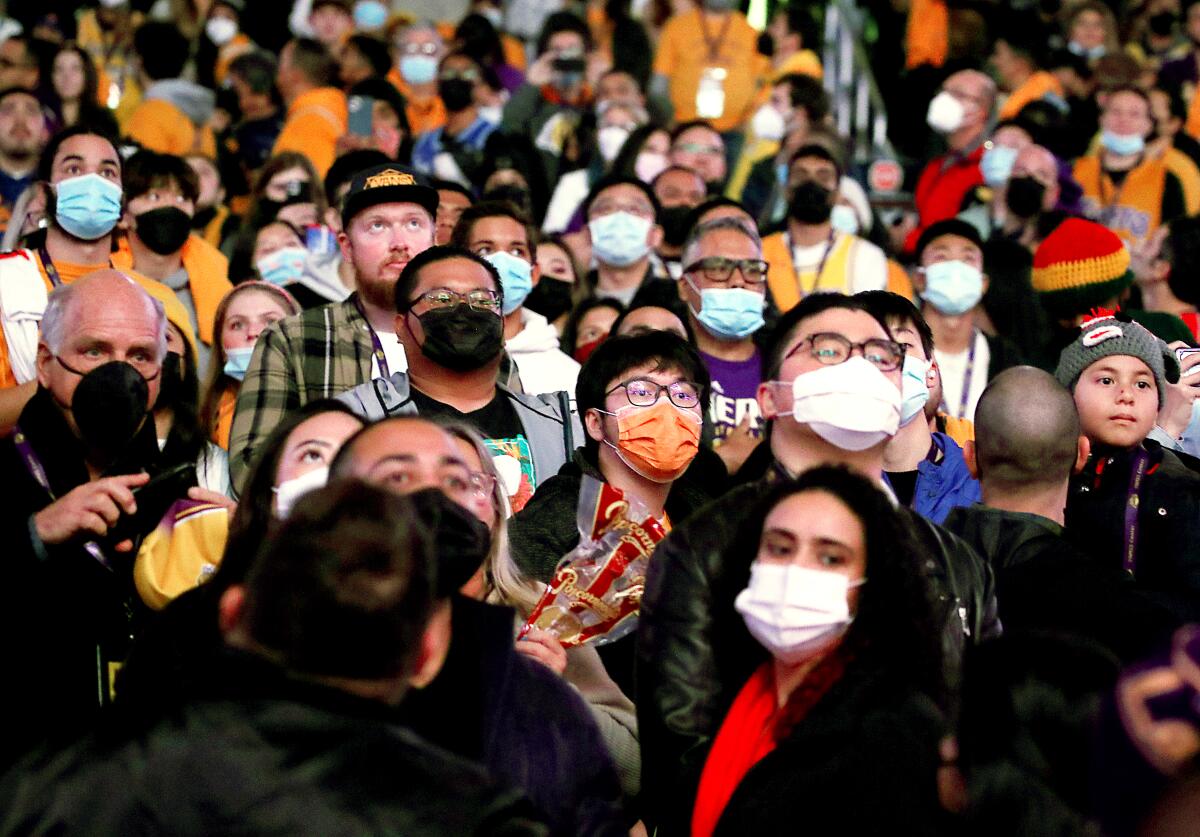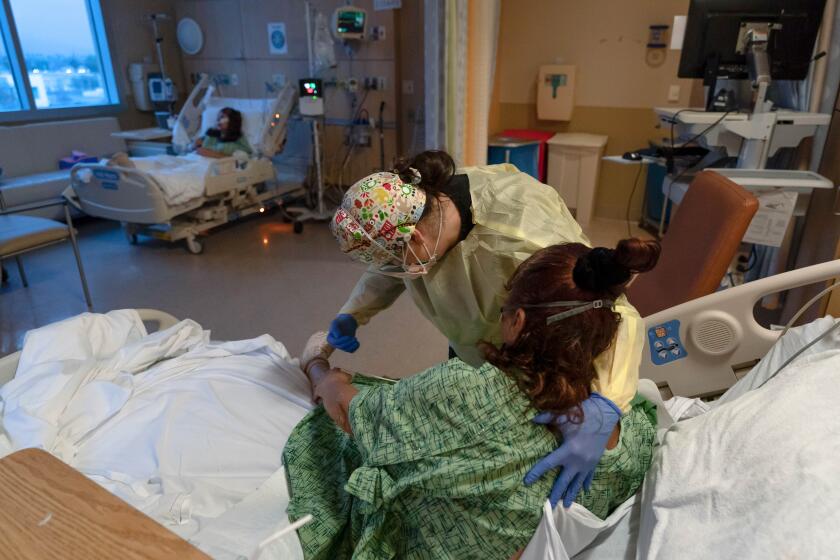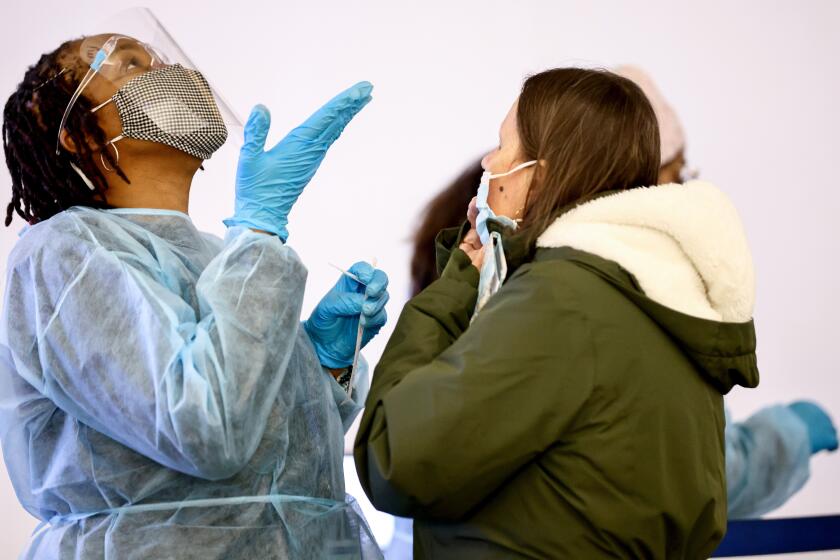Omicron surge means it’s time to upgrade your mask. Here’s how

- Share via
Health officials and experts are increasingly saying it’s time to upgrade your face masks, especially in light of the Omicron surge.
California’s public health director and health officer, Dr. Tomás Aragón, wrote recently that with the increasing airborne spread of the coronavirus, it’s important to improve the fit of masks and their filtration — making enhancements that go beyond old, loose, cloth face coverings that became popular in 2020.
Dr. Robert Wachter, chair of UC San Francisco’s Department of Medicine, agreed. Since Omicron is twice as infectious, Wachter wrote, “an encounter that you could have tolerated for Delta may well infect you [with] Omicron. Knowing this, it’s worth upgrading the protection you get from your mask.”
Here’s the latest advice from the California Department of Public Health ranking the protectiveness of certain kinds of masks:
California reported its highest single day total of COVID-19 hospitalizations in nearly three months and a nearly 14% increase from last week.
Best masks
The best masks are N95, KN95 and KF94 masks. Don’t wear an additional face covering on top of these masks.
Better masks
Less effective, but still better than loose cloth masks alone, are surgical masks — commonly called blue masks because there’s usually a blue-tinted color on the outside of the masks.
They can be made more effective by placing a cloth mask over the surgical mask, which make the fit of the face covering more snug. (Officials don’t recommend wearing two surgical masks.)
“Throw the mask away if it is wet/or dirty or after a day of use, whichever comes first,” the L.A. County Department of Public Health says.
Gaps around the sides of a surgical mask make them less protective than a tighter-fitting mask.
“With gaps, air that has virus particles can easily leak in or out around the sides of the mask. Good fit forces the air that you breathe out and breathe in to go through the mask and be filtered,” the state Department of Public Health says.
Since the Omicron coronavirus variant was discovered, officials have said the best defense is vaccinations and getting booster shots.
Good masks
“Cloth masks can work well if they are tight-fitting and made of materials that filter out small particles,” the state’s website says.
The California Department of Public Health says that good masks have the following properties:
- Two layers of tightly woven cotton with a third layer of non-woven fabric. The third layer could be a mask filter insert or a synthetic fabric such as polypropylene.
- Nose wires to reduce gaps from the nose.
- Adjustable ear loops or straps that go around the head to reduce gaps from the face.
“Face coverings without these properties should not be used in higher-risk situations if other options are available. Examples of less-effective face coverings are two-layer cotton masks, bandanas and gaiters,” the state Department of Public Health says.
Still, any cloth mask is better than no mask at all.
2021 was going to be about rebuilding, restoring, recovering… Then the Omicron variant arrived.
Why masks are important
People who are vaccinated and have received their booster are well-protected from severe illness, hospitalization and death, unless they have weakened immune systems — even against the Omicron variant.
Officials say the newest variant’s highly mutated strain likely means that more vaccinated people will get infected compared with earlier variants, including Delta. But even if vaccinated people do get infected, they are more likely to show either no symptoms or only mild symptoms.
Nonetheless, vaccinated, boosted people remain the least likely to suffer a coronavirus infection. Unvaccinated people have the highest chance of getting infected and being hospitalized with COVID-19.
For the weeklong period that ended Dec. 11, for every 100,000 unvaccinated L.A. County residents, 272 of them were newly infected with the coronavirus. By comparison, for every 100,000 L.A. County residents who were considered fully vaccinated but hadn’t received a booster, 68 of them were infected.
Those who had received their booster shots had the lowest risk of infection: For every 100,000 residents who had received a booster, only 12 were infected that week. That means unvaccinated people were 23 times more likely to be infected with the coronavirus than vaccinated people who had received a booster shot.
Vaccinated people also were far less likely to be hospitalized than those who are unvaccinated. For every 100,000 unvaccinated L.A. County residents, 25 were hospitalized for the week that ended Dec. 11. By comparison, the hospitalization rate for people considered fully vaccinated was 1.
California recently ordered a statewide mask requirement in indoor public spaces, effective through Jan. 15, in counties that did not already have a local mandate.
More to Read
Sign up for Essential California
The most important California stories and recommendations in your inbox every morning.
You may occasionally receive promotional content from the Los Angeles Times.















